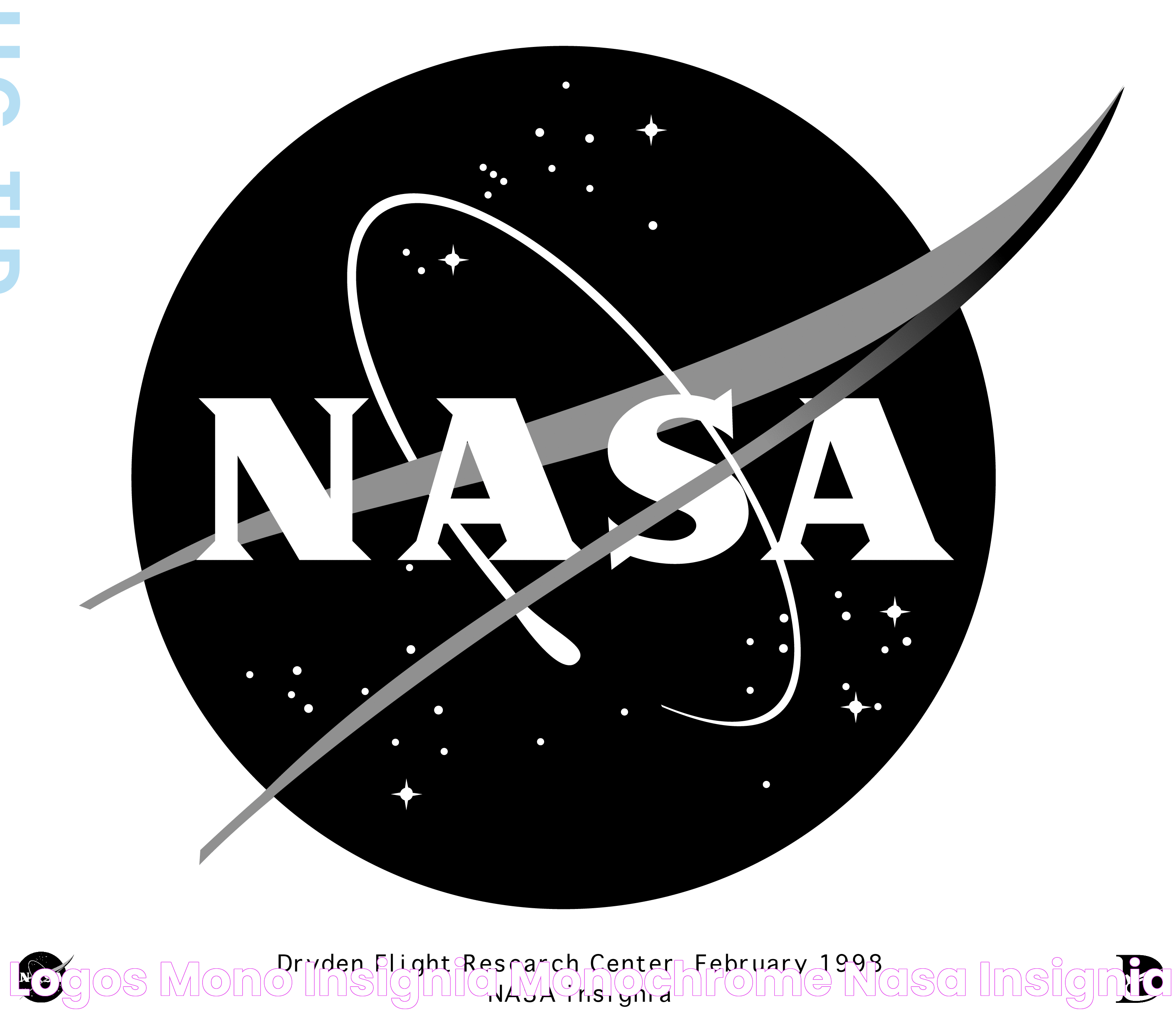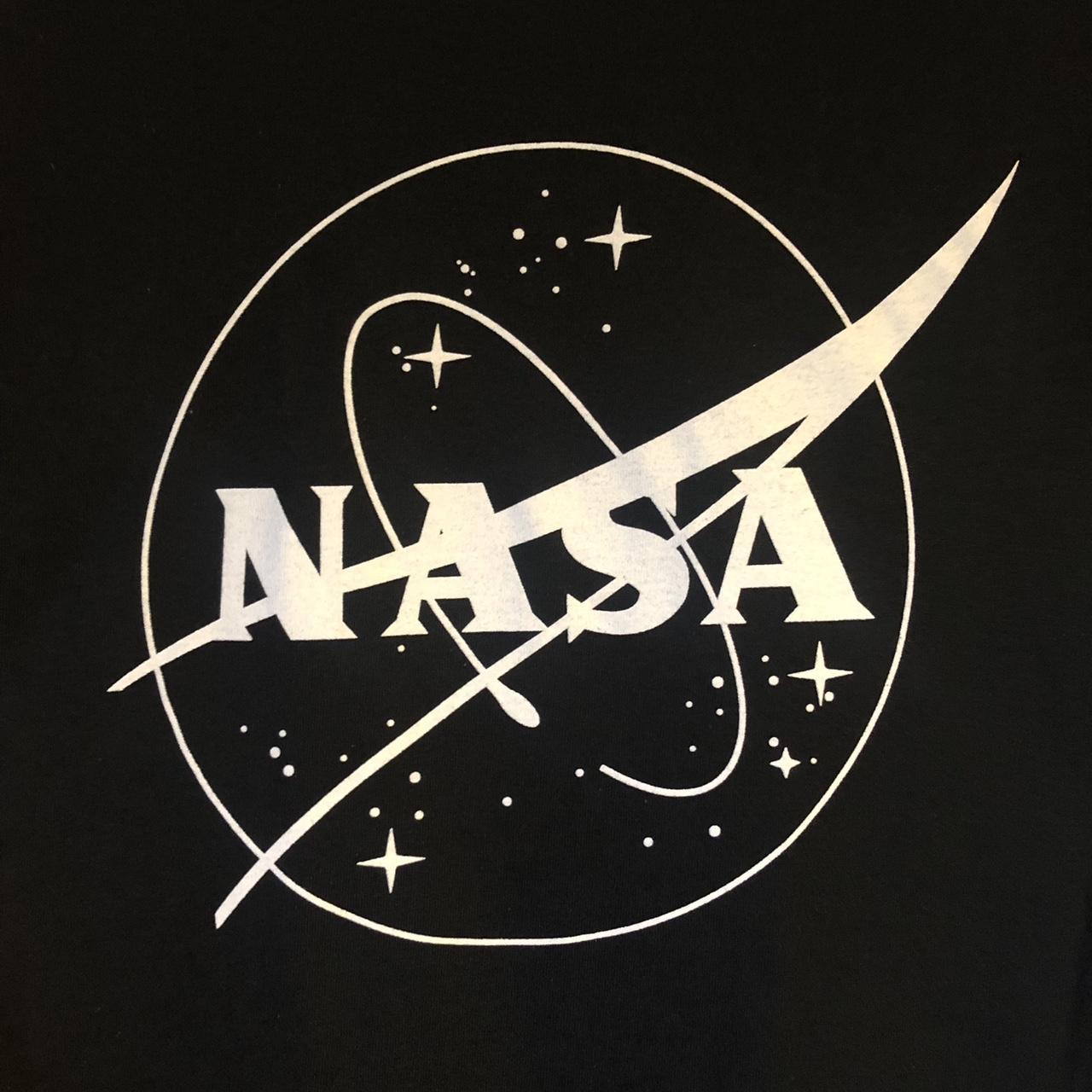The NASA insignia logo is an iconic symbol that represents the spirit of exploration, innovation, and scientific discovery. Since its inception, the logo has undergone several transformations, each reflecting a new era in space exploration and technological advancement. The NASA insignia logo is not just a visual emblem; it is a testament to the agency's mission and the collective achievements of humankind in the realm of outer space.
Over the years, the NASA insignia logo has become a symbol of inspiration and curiosity. It is widely recognized across the globe and is often associated with groundbreaking missions, cutting-edge technology, and the relentless pursuit of knowledge. From the first moon landing to the Mars rover expeditions, the insignia logo has been a constant presence, signifying the dedication and passion of the people behind NASA's many successes.
The design of the NASA insignia logo has a rich history, rooted in the agency's commitment to exploring the unknown and expanding our understanding of the universe. Each element of the logo holds a specific meaning, contributing to its overall impact and significance. As we delve into the history and evolution of the NASA insignia logo, we will uncover the stories, meanings, and missions that have shaped this iconic symbol over the decades.
Read also:Exquisite Dining At Lloyds Restaurant Amp Lounge A Culinary Paradise
Table of Contents
- The History of the NASA Insignia Logo
- What Are the Key Design Elements?
- The Symbolism Behind the Logo
- How Has the NASA Logo Evolved Over Time?
- Current Use and Variations
- How Is the NASA Insignia Perceived by the Public?
- Cultural Impact and Influence
- The Design Process: Who Created the Logo?
- Legal Aspects and Usage Rights
- Can the NASA Insignia Logo Be Used Commercially?
- The Future of the NASA Insignia Logo
- Conclusion
- Frequently Asked Questions
The History of the NASA Insignia Logo
The NASA insignia logo, often referred to as the "meatball," was designed in 1959, a year after the agency was established. The original design was created by James Modarelli, a NASA employee, and it was intended to reflect the agency's mission of space exploration and aeronautics research. The logo features a round blue sphere, representing a planet, with stars scattered across it. A red chevron, symbolizing aeronautics, and a white orbital path complete the design. The letters "NASA" are prominently displayed in a bold, modern font.
Over the decades, the NASA insignia logo has become a powerful symbol of innovation and exploration. It has been present on spacecraft, mission patches, and various NASA publications. The "meatball" logo was replaced by the "worm" logo in 1975, a sleek, modern design that emphasized the agency's forward-thinking approach. However, the original logo was reinstated in 1992 and has since remained the primary insignia of NASA.
What Are the Key Design Elements?
The NASA insignia logo is composed of several key design elements, each with its own significance:
- Blue Sphere: Represents a planet, symbolizing the agency's focus on space exploration.
- Stars: Reflect the vastness of space and the endless possibilities of discovery.
- Red Chevron: Symbolizes aeronautics, highlighting NASA's role in aviation research and development.
- White Orbital Path: Represents space travel and exploration.
- NASA Lettering: A bold, modern font that conveys the agency's identity and mission.
The Symbolism Behind the Logo
The NASA insignia logo is rich in symbolism, reflecting the agency's mission and values. The blue sphere and stars represent the wonders of the universe and NASA's commitment to exploring the unknown. The red chevron is a nod to the agency's aeronautics roots, emphasizing its pioneering efforts in aviation technology. The white orbital path signifies the journey of space exploration, while the bold NASA lettering reinforces the agency's identity and ambition.
The logo's design elements come together to create a powerful visual representation of NASA's goals and achievements. It embodies the spirit of exploration, innovation, and discovery that drives the agency's work and inspires people around the world.
How Has the NASA Logo Evolved Over Time?
The evolution of the NASA insignia logo reflects changes in the agency's mission and focus over the years. The original "meatball" logo, introduced in 1959, was replaced by the "worm" logo in 1975. The "worm" design featured a stylized, modern font spelling out "NASA" in red, without any additional imagery. This change was intended to convey a more contemporary, forward-thinking image for the agency.
Read also:The Ultimate Guide To Tonal Gym Your Path To Smarter Fitness
In 1992, the original "meatball" logo was reinstated as the primary insignia, in response to public preference and nostalgia for the classic design. The return of the "meatball" logo marked a renewed emphasis on NASA's rich history and the timeless nature of its mission. Today, the "meatball" logo remains the official insignia of NASA, symbolizing the agency's enduring commitment to exploration and discovery.
Current Use and Variations
The NASA insignia logo is used in a variety of contexts, from official documents and mission patches to merchandise and educational materials. It is also featured prominently on NASA's website and social media platforms, serving as a recognizable symbol of the agency's work and achievements.
In addition to the primary "meatball" logo, NASA uses several variations for specific purposes. These include mission-specific patches, which often incorporate elements of the insignia into their designs, and commemorative logos for special events and anniversaries. These variations allow NASA to maintain its brand identity while also celebrating its diverse range of missions and accomplishments.
How Is the NASA Insignia Perceived by the Public?
The NASA insignia logo is widely recognized and admired by people around the world. It is often associated with innovation, exploration, and scientific discovery, and it inspires curiosity and wonder about the universe. The logo's timeless design and enduring symbolism have made it a beloved icon of space exploration.
The public's perception of the NASA insignia is shaped by the agency's achievements and contributions to science and technology. From the Apollo moon landings to the Mars rover missions, NASA's accomplishments have captured the imagination of people everywhere. The insignia logo serves as a reminder of these milestones and the possibilities that lie ahead.
Cultural Impact and Influence
The NASA insignia logo has had a significant cultural impact, influencing everything from fashion and design to popular media and art. It has been featured in films, television shows, and music videos, often as a symbol of futuristic technology and exploration. The logo's iconic design and association with space travel have made it a popular motif in clothing and accessories, with many people proudly wearing NASA-branded apparel.
The influence of the NASA insignia extends beyond its visual appeal, as it also represents the spirit of human curiosity and the desire to explore the unknown. It has become a symbol of hope and inspiration, encouraging people to dream big and pursue their passions, whether in science, technology, or any other field.
The Design Process: Who Created the Logo?
The original NASA insignia logo, known as the "meatball," was created by James Modarelli, a talented graphic designer at NASA's Lewis Research Center. Modarelli's design was selected for its simplicity, clarity, and ability to convey the agency's mission of space exploration and aeronautics research. The "meatball" logo has since become a powerful symbol of NASA's achievements and aspirations.
The design process for the NASA insignia involved careful consideration of the agency's goals and values. Each element of the logo was chosen for its symbolic significance, creating a cohesive visual representation of NASA's mission. Modarelli's design has stood the test of time, remaining a beloved and recognizable emblem of space exploration.
Legal Aspects and Usage Rights
The NASA insignia logo is a protected symbol, subject to specific legal restrictions and usage rights. As a government agency, NASA's logos and insignia are considered public domain, meaning they cannot be used for commercial purposes without permission. This ensures that the logo is used appropriately and maintains its integrity as a symbol of the agency's work and achievements.
Individuals and organizations wishing to use the NASA insignia logo must adhere to the agency's guidelines and obtain approval for any commercial use. This includes merchandise, promotional materials, and other products that feature the logo. By maintaining strict control over the use of its insignia, NASA can preserve its brand identity and ensure that its logo is used in a way that aligns with its mission and values.
Can the NASA Insignia Logo Be Used Commercially?
While the NASA insignia logo is available for educational and informational purposes, its commercial use is restricted. Companies and individuals wishing to use the logo for commercial purposes must obtain permission from NASA and adhere to the agency's guidelines. This includes ensuring that the logo is used accurately and appropriately, without any alterations or modifications.
Commercial use of the NASA insignia logo is typically reserved for collaborations and partnerships that align with the agency's mission and values. By carefully regulating the commercial use of its logo, NASA can maintain its brand integrity and ensure that its insignia remains a respected and recognizable symbol of space exploration.
The Future of the NASA Insignia Logo
The future of the NASA insignia logo is closely tied to the agency's ongoing mission and vision for space exploration. As NASA continues to push the boundaries of science and technology, the logo will remain a symbol of innovation and discovery. With upcoming missions to the Moon, Mars, and beyond, the insignia will continue to inspire future generations of explorers and scientists.
As NASA evolves and adapts to new challenges and opportunities, the insignia logo may also undergo changes to reflect the agency's growth and progress. However, the core elements of the logo, which have stood the test of time, will likely remain a constant reminder of NASA's commitment to exploration and the pursuit of knowledge.
Conclusion
The NASA insignia logo is more than just a visual emblem; it is a powerful symbol of exploration, innovation, and scientific discovery. From its origins in the early days of space exploration to its current role as a globally recognized icon, the logo represents the spirit and achievements of NASA and the people behind its many successes. As we look to the future, the NASA insignia logo will continue to inspire and remind us of the endless possibilities that lie beyond our world.
Frequently Asked Questions
- What is the NASA insignia logo known as? The NASA insignia logo is commonly referred to as the "meatball."
- Who designed the NASA insignia logo? The original NASA insignia logo was designed by James Modarelli in 1959.
- Can the NASA insignia be used for commercial purposes? Commercial use of the NASA insignia is restricted and requires permission from NASA.
- When was the "worm" logo introduced? The "worm" logo was introduced in 1975 and used until 1992.
- What does the red chevron in the logo represent? The red chevron symbolizes aeronautics, highlighting NASA's role in aviation research.
- Is the NASA insignia logo in the public domain? Yes, the NASA insignia logo is considered public domain, but its use is subject to specific guidelines and restrictions.
For more detailed information on the NASA insignia logo, you can visit NASA's official website at www.nasa.gov.

